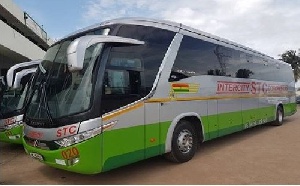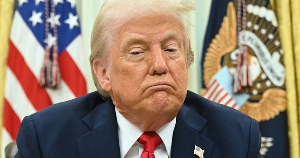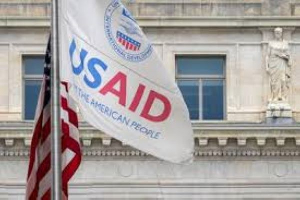One question has been on my mind for ages, which I believe should also engage the attention of other women, notably rights campaigners, politicians, and others in positions of authority.
It is this taflatse/sɛbe matter: how come in Ghana those who construct public place urinals for women don’t seem to know the female anatomy or how women urinate? Why are women’s urinals at most public venues constructed like those for men?
(Taflatse in the Ga language or sɛbe in Akan, refers to ‘usually-not-for-public-discussion/mention’ subjects or words.)
Regrettably, despite the fact that women reportedly form a little over half of Ghana’s population of more than 34 million, this important matter for women doesn’t seem to be of interest to the relevant institutions. These include: The Ministry of Gender, Children and Social Protection; women in Parliament; women’s rights activists; women in positions of authority; the Sanitation Ministry; the Local Government Ministry and the local assemblies.
I have never heard the subject mentioned in those quarters.
In this International Women’s Month, an extension of International Women’s Day (IWD) marked on March 8, and combined with my recurrent frustrating experiences, it seems opportune to raise this issue publicly yet again. The IWD 2024 theme was ‘Invest in women: Accelerate progress’; and the campaign theme for the month is 'Inspire Inclusion.
The issue of providing women-friendly urinals at public venues may be viewed as a minor one, especially in view of current cost of living challenges, but just the same it is important because it has to do with dignity, notably, women’s dignity.
Correcting permanently this glaring anomaly necessitating females using unsuitable male urinals would be a simple but meaningful demonstration of respect for women, inspiring inclusiveness. It would show that women’s needs, too, are important to the decision-makers.
Obviously, those responsible are invariably men who either give contracts for the construction of the conveniences, or who implement the order in their capacity as building contractors, or masons. Presumably, even excluding their mothers, they have sisters, wives, daughters, girlfriends, nieces, female school mates, work colleagues and other women acquaintances.
Therefore, they should know that a woman’s anatomy is different from a man’s. So why do they build women’s urinals like men’s? I have written about this issue a number of times, including a reader’s letter published in the Daily Graphic, in February, 2023 - specifically about the women’s urinal at the Sunyani Intercity Coaches (STC) Ltd terminal.
However, regrettably, it seems that despite their attention having been drawn to the problem long ago, the successive managements of that leading transport company have paid no heed to what is conceivably a concern for their women passengers.
Recently, I had the opportunity to update myself on the Sunyani terminal situation, because on February 29, 2024, I was a passenger in an STC Accra to Dormaa-Ahenkro morning service. When the bus pulled in at the Sunyani terminal, late afternoon, I was surprised to see that the urinal renovation I wrote about in 2023, appeared not fully completed, as indicated by the environs.
And, the frustrating news is that there is no improvement, because AGAIN, the design of the new urinal for women is the same as for men’s! I had thought the management would take the opportunity of the renovation to construct a women-friendly urinal. But evidently, STC has no such interest in the comfort of their women passengers.
So, respectfully, dear STC and dear men, in this matter, kindly appreciate that one design simply doesn’t fit both sexes!
Fortunately, I have evidence that it can be done, that there is at least one company in this country that knows how a female urinal should be constructed. Take a bow, PLUS ENERGY Company (PEC)!
Their fuel station, located on the Sunyani-Kumasi highway, which I chanced upon in August, 2021, had a women’s urinal which looked somewhat dilapidated on the outside, but inside, it was a perfect urinal for females: two parallel ledges with a gutter in the middle. Therefore, a woman could use it in dignity, without any kind of embarrassment. I salute Plus Energy again! And I pray that the company is still in business.
Clearly, a women’s urinal should be built the PEC way. Secondly, such a design could also be seen as a ‘unisex urinal’ as it could conveniently be used by men, too.
With the kind of unsuitable urinal, as the STC one in Sunyani, a woman has great difficulty using it. Indeed, some women have to half undress to use relieve themselves, even by squatting. Why subject women to this discomfort? Why the disrespect to women passengers? Why this punishment?
Another problem is that their urinal design offers no privacy at all, as it is a long, open facility. Presumably, STC management doesn’t appreciate the fact that some users might need privacy.
Furthermore, although there are two WCs for passengers at that terminal, my experience is that, strangely, they are not always available for use. For example, on February 29, 2024 would-be users were turned away by a staff member; but on March 5, on my return trip by the night service to Accra, the WCs were in use – with an attendant seated at a table collecting the fee.
Still, the Sunyani terminal disappointment was not the only negative aspect about STC conveniences.
Earlier on February 29, before the departure from Accra, checking out the passengers ‘washroom’ at the Kwame Nkrumah Circle, I confirmed that it was still far below STC’s high image.
Although the company has been operating from Circle for some years, suffice it to state that the two women’s toilets with unusable flush handles, reflected all that is considered a nauseating washroom experience.
Interestingly, on the back of the small STC ticket /“Boarding Pass”, they have managed to squeeze in as many as 14 “CONDITIONS OF CARRIAGE”, listing what is expected of passengers. But there isn’t a single word about what courtesies passengers should expect from STC!
So how about STC adding to that list a sentence about providing DECENT conveniences for passengers?
I’m of course happy that STC is renovating the Sunyani passenger conveniences, but why can’t they construct a facility suitable for women? And of what use is a passenger’s toilet that is locked?
Given their status, the company should be setting the pace in this area, for other transport companies to emulate.
As indicated, unfortunately, nobody seems to care about the places of conveniences that patrons of public venues and travellers at transport terminals have to use; probably because the people in authority don’t use public transport and so they don’t experience the degrading, dehumanising facilities offered travellers.
Evidently local assemblies all have sanitation bylaws, but it appears these don’t apply to public conveniences; or they don’t stipulate how a urinal for women should be built. Otherwise, surely nobody would be constructing women’s urinals like men’s.
I’m also wondering why the Sanitation Ministry can’t be given the responsibility of supervising the assemblies with regards to provision of public places of conveniences, especially at transport terminals, markets and events centres. It seems to me that it should also be possible for the Gender Ministry, the Local Government Ministry and the assemblies to collaborate and design a model women’s urinal for public venues.
This may appear to be over ambitious, but I believe that it’s such initiatives that form the building blocks of an advanced society. Moreover, the blatant and unwarranted disrespect to women has to stop! ajoayeboahafari@yahoo.com
Opinions of Tuesday, 19 March 2024
Columnist: Ajoa Yeboah-Afari















